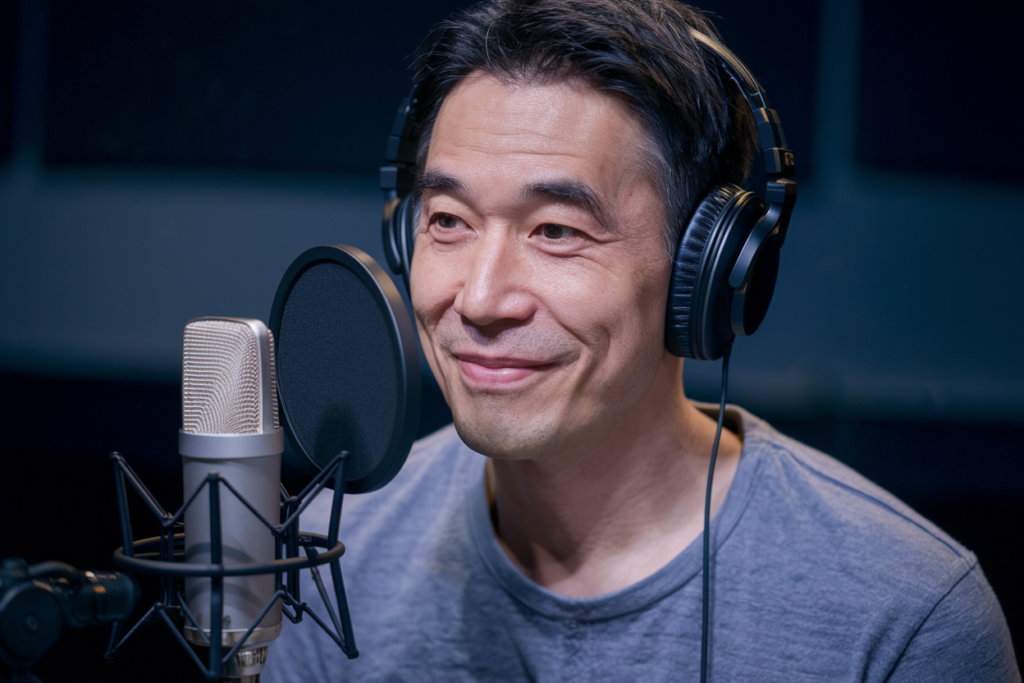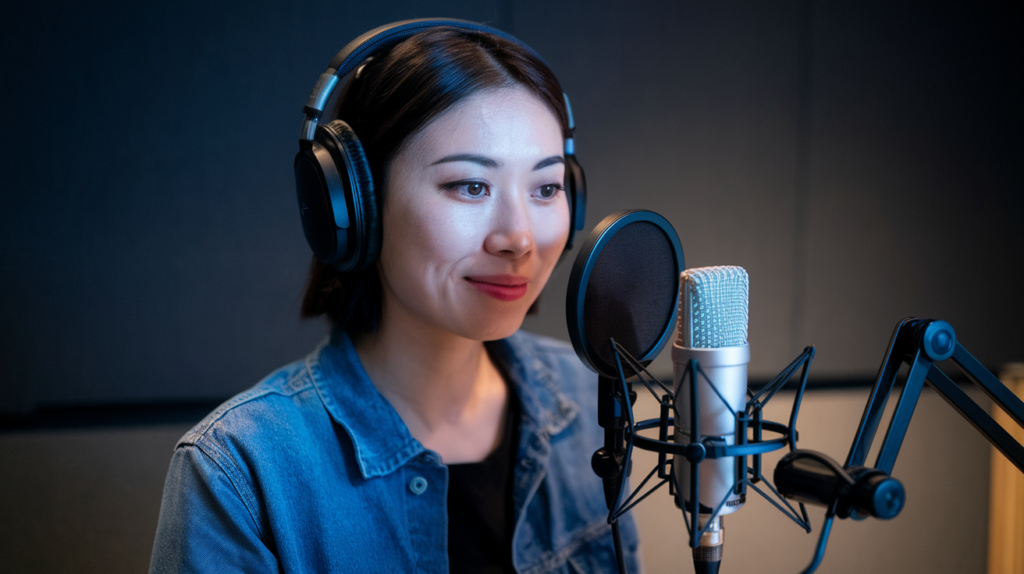Key Takeaways
- Cultural Understanding: Authentic Japanese voiceovers require a deep grasp of the language and cultural nuances to connect with audiences effectively.
- Significance of Voice Talent: Selecting a proficient voice actor familiar with regional dialects and customs is crucial for delivering relatable content.
- Key Elements of Authenticity: Focus on voice quality, delivery style, character interpretation, and language proficiency to enhance the authenticity of your project.
- Mastering Pronunciation: Proper pronunciation and intonation are vital in conveying emotions and maintaining the essence of the script.
- Training Matters: Trained voice actors bring invaluable skills that ensure subtle emotions and cultural nuances are effectively communicated.
- Quality Tools Needed: Utilize high-quality recording software and editing techniques to achieve clear audio and polished final products.
Ever wondered how to achieve authentic Japanese voiceovers that truly resonate? Whether you’re a content creator or a business looking to expand your reach, mastering this art can elevate your projects. The challenge lies in capturing the nuances of the language and culture while delivering a performance that feels genuine.
Understanding Authentic Japanese Voiceovers
Achieving authentic Japanese voiceovers involves grasping the nuances of language and culture. This understanding allows you to connect deeply with your audience.
Importance of Cultural Context
Cultural context plays a vital role in delivering impactful voiceovers. When selecting a voice artist, consider their familiarity with Japanese customs, idioms, and regional dialects. A voice actor who understands cultural subtleties can bring authenticity to your project. For instance, using colloquial phrases or appropriate honorifics enhances relatability. You want the final product to resonate with native speakers while capturing the essence of the content.
Key Elements of Authenticity
Authenticity hinges on several key elements that elevate your project from average to exceptional:
- Voice Quality: The clarity and tone should reflect the emotion behind the script.
- Delivery Style: Adjustments in pacing and intonation can convey urgency or calmness effectively.
- Character Interpretation: A skilled voice over talent embodies characters convincingly, making them believable.
- Language Proficiency: Fluency in both spoken and written Japanese ensures accuracy in every line delivered.
By focusing on these aspects, you create an engaging experience for listeners that feels genuine and relatable.
Techniques for Achieving Authentic Japanese Voiceovers
Achieving authentic Japanese voiceovers requires a keen understanding of the language and its cultural nuances. Here are some essential techniques to enhance your project.
Language Proficiency and Dialects
Selecting a voice artist with exceptional proficiency in Japanese is crucial. The language includes various dialects, each carrying distinct characteristics. For example, Tokyo’s accent differs significantly from those spoken in Osaka or Hokkaido. Understanding these variations allows you to choose the right voice talent who can deliver lines that resonate with specific audiences. Engaging a native speaker familiar with local idioms and expressions will add depth and authenticity to your voiceover.
Mastering Pronunciation and Intonation
Pronunciation plays a vital role in creating an authentic experience. Focus on enunciating vowels and consonants correctly, as mispronunciation can alter meanings significantly. Additionally, intonation is key; it conveys emotions and intentions behind words. A skilled voice actor will use subtle changes in pitch to emphasize points effectively, making dialogue feel more natural. Practicing with native speakers or utilizing pronunciation guides ensures clarity while maintaining the original essence of the script.
By honing these skills, you can elevate your projects with genuine Japanese voiceovers that truly connect with listeners.
The Role of Voice Actors
Voice actors play a crucial part in achieving authentic Japanese voiceovers. They bring scripts to life, capturing the essence of characters and narratives through their unique skills. You’ll find that selecting the right voice talent can significantly influence how your audience connects with your content.
Training and Skills Development
Trained voice actors possess a deep understanding of language nuances and vocal techniques. They often undergo extensive training, focusing on aspects like pronunciation, intonation, and emotional delivery. Many engage in workshops or classes to refine their skills continually. This dedication ensures they can convey subtle emotions and cultural nuances effectively, making your project resonate with authenticity.
Selecting the Right Voice Talent
Choosing the right voice artist is essential for delivering an impactful performance. Look for a voice actor who not only speaks fluent Japanese but also understands regional dialects and cultural references. When you select a voice over talent familiar with these elements, you enhance authenticity while fostering a deeper connection between your brand and its audience. Consider listening to demos or conducting auditions to assess how well potential candidates embody your project’s spirit before making a decision.
Tools and Technologies
Achieving authentic Japanese voiceovers requires the right tools and technologies. Utilizing software that caters specifically to voice recording and editing can significantly enhance your project’s quality.
Software for Voice Recording
Selecting high-quality recording software is crucial for capturing the nuances of Japanese voiceovers. Look for programs that offer features like multi-track recording, noise reduction, and real-time monitoring. Popular options include:
- Audacity: A free, open-source program known for its versatility.
- Adobe Audition: A professional-grade tool with advanced editing features.
- Reaper: Affordable yet powerful, ideal for both beginners and pros.
These tools help you record clear audio while allowing easy adjustments to ensure an authentic sound.
Editing Techniques for Authentic Sound
Editing techniques play a significant role in achieving a polished final product. Consider these strategies:
- Noise Reduction: Remove background noises to focus on the voice artist’s clarity.
- Equalization: Adjust frequency levels to enhance vocal warmth and presence.
- Compression: Balance volume levels so every word comes through consistently without distortion.
Utilizing these techniques not only enhances sound quality but also ensures that emotional nuances resonate with listeners. By investing time in both recording software and effective editing methods, you elevate your project’s authenticity, making it more impactful for your audience.
Conclusion
Achieving authentic Japanese voiceovers is a journey that requires dedication and skill. By understanding the intricacies of the language and culture you can create a connection that resonates with your audience. Selecting the right voice artist who embodies these qualities makes all the difference in delivering a genuine performance.
Investing in quality recording tools and mastering editing techniques enhances your project’s overall impact. With attention to detail in pronunciation intonation and cultural context you’re well on your way to elevating your content. Embrace this process and watch as your projects come alive with authenticity that truly speaks to listeners.
Frequently Asked Questions
What are the key elements of authentic Japanese voiceovers?
Authentic Japanese voiceovers rely on several key elements: voice quality, delivery style, character interpretation, and language proficiency. Understanding cultural nuances and idioms is essential for connecting with the audience effectively.
Why is cultural context important in Japanese voiceovers?
Cultural context enriches a voiceover by ensuring it resonates with the target audience. A deep understanding of Japanese customs and regional dialects allows the voice artist to deliver a more genuine performance.
How can I select the right voice artist for my project?
Look for a voice artist fluent in Japanese who understands regional dialects and cultural references. Listening to demos or conducting auditions can help assess how well candidates embody your project’s spirit.
What techniques improve authenticity in Japanese voiceovers?
Mastering pronunciation and intonation is vital for authenticity. Additionally, selecting a proficient voice artist familiar with various dialects enhances emotional delivery and helps convey accurate meanings.
Which tools are recommended for recording Japanese voiceovers?
High-quality recording software like Audacity, Adobe Audition, or Reaper is recommended. These tools capture nuances effectively while allowing you to apply essential editing techniques such as noise reduction and equalization.
How does mispronunciation affect Japanese voiceovers?
Mispronunciation can significantly alter meanings in the Japanese language. Accurate pronunciation ensures that messages are conveyed correctly, while proper intonation communicates emotions effectively to listeners.
What role do trained voice actors play in projects?
Trained voice actors bring scripts to life by capturing characters’ essence through their vocal skills. Their expertise in language nuances enhances audience connection and adds depth to storytelling.
Why invest time in editing techniques for recordings?
Effective editing techniques like compression and equalization enhance sound quality, making emotional nuances resonate better with listeners. Investing time here ensures your final product feels polished and professional.







